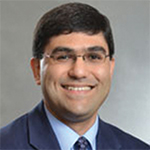“Currently, my advice would be to stay away from patient-initiated diagnosing,” Dr. Walsh says. “The potential for trouble is a lot more than any benefit you might get out of it. If you want to participate, be very careful on how you word your interactions, as you would in other outside- the-office situations.”
Physician to Physician
Another method of crowdsourcing allows a physician to get help with diagnostic dilemmas from other doctors. Examples of this kind include such sites as sermo.com, healthtap.com and doximity.com. These platforms allow physicians to post questions and get answers from others in their field, often in close to real time.
“I doubt these will ever replace the traditional curbside consult or being able to call up a subject matter expert,” says Soumya D. Chakravarty, MD, PhD, FACP, FACR, an assistant professor of medicine in the Rheumatology Division at the Drexel University College of Medicine. “I think these are complementary to the traditional sources of information instead of a replacement.”
Find What Works for You
All of the websites work a little differently, so an individual physician may want to try more than one to find which works best for them. The sites generally have you log in using a username and password that then takes you to a personalized home page. Links will be available to help you post a question, assist in finding responses and ways to find and follow discussions about problems posted by others. There may also be links to surveys, educational material and other general information.

Dr. Chakravarty
“One of the best advantages is the instantaneous response you can get,” says Dr. Chakravarty. “Having another set of eyes and a different mind with different training and experiences to think about your problem can usually help.”
Who’s Responding?
A concern expressed about these doctorto- doctor platforms is that you don’t know the person making the suggestions. The curbside consults are with colleagues you know, and the noted experts are well known in their fields.
“These [sites] generally verify that you are credentialed and licensed before you can post,” notes Dr. Chakravarty. “As part of their due diligence, they usually ask about your specialty areas and board certification. That can provide a filter from the get-go.”
However, as with the traditional methods, you still have to evaluate the suggestions. As with any input from any source, you look at it in the context of standards of care, the evidence available and your usual evaluation techniques.

